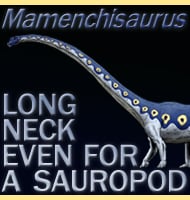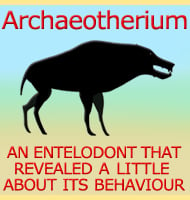In Depth
Khaan is a genus of small oviraptorid dinosaur that lived in Mongolia during the Late Cretaceous. Studies into Khaan individuals may have revealed differences between males and females. On some specimens, the caudal (tail) vertebrae have reduced chevrons, and this has been seen as a sign of a female. The reduced chevrons at the base of the vertebrae would have allowed eggs to pass without catching the vertebrae.
Further Reading
- Two new oviraptorids (Theropoda: Oviraptorosauria), Upper Cretaceous Djadokhta Formation, Ukhaa Tolgod, Mongolia. Journal of Vertebrate Paleontology 21(2):209-213. - J. M. Clark, M. A. Norell & R. Barsbold - 2001. - A possible instance of sexual dimorphism in the tails of two oviraptorosaur dinosaurs. - Scientific Reports 5: 9472. - W. Scott Persons IV, Gregory F. Funston, Philip J. Currie & Mark A. Norell - 2015.










